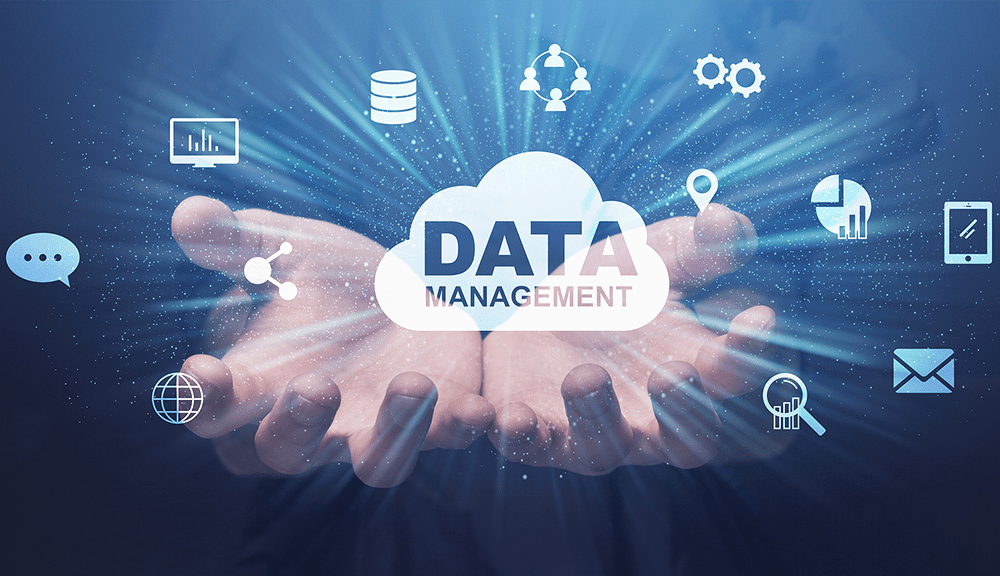Prospects can get stuck in the B2B pipeline for various reasons. One common cause is a need for more clarity or alignment between the prospect’s needs and the solutions offered by the company. This can lead to indecision or reluctance to move forward.
Also, prospects may need help with internal roadblocks such as funding limits, decision-making delays, or conflicting agendas within their firm. These variables might extend the sales cycle and cause leads to stall.
To solve B2B pipeline issues, businesses must take a proactive approach. This involves improving communication to ensure that the prospect’s needs match the company’s offers.
Providing bespoke solutions that address the prospect’s unique pain areas can also help overcome objections and drive the transaction ahead.
Let’s learn how to manage a B2B pipeline that converts prospers into paying customers.
What does a business pipeline mean?
In the business world, a pipeline refers to the visual representation of potential revenue-generating opportunities. Imagine a series of stages, like a pipe, through which potential customers (leads) progress.
At the beginning, leads are identified and qualified. As they move through the stages, they are nurtured and assessed for suitability. The goal is to move qualified leads towards a “closed-won” deal, signifying a successful sale.
By monitoring the pipeline, businesses can forecast future sales, identify bottlenecks in the sales process, and ensure a steady flow of potential customers.
How do you manage a B2B pipeline?
To convert a B2B prospect, a well-managed pipeline is the key to predictable revenue and consistent growth. It visualizes the journey of potential customers, from initial awareness to loyal clients. But how do you ensure this B2B pipeline is brimming with qualified leads and steadily feeding closed deals?
Here’s a breakdown of effective B2B pipeline management:
1# Building the Foundation: Stages and Lead Flow
The first step is defining the stages of your B2B sales process. Common stages include prospecting (identifying leads), qualification (assessing fit), initial contact, needs assessment, proposal, negotiation, and closing. Each stage has clear criteria for moving the leads forward. Qualified B2B leads enter the pipeline steadily and progress through stages.
2# Prospecting Powerhouse: Identifying the Right Fits
Not all leads are created equal. Invest time in creating an ideal customer profile (ICP) that outlines the characteristics of your perfect client. Utilize various prospecting techniques, like attending industry events, content marketing, and social media outreach, to attract leads that align with your ICP.
3# Qualification: Sifting for Gold
Only some leads deserve your full sales force. Qualification helps separate promising prospects from those unlikely to convert. This method involves assessing factors like budget, decision-making authority, and pain points aligning with your solution. Lead scoring, where points are assigned based on specific criteria, can further streamline qualification.
4# Tools and Technology: Streamlining the Process
Customer Relationship Management (CRM) software is your B2B pipeline’s digital backbone. It centralizes lead data, tracks progress through stages, and automates tasks like lead nurturing emails. Spreadsheets can work for small teams, but CRMs offer powerful analytics and reporting for informed decision-making.
5# Metrics that Matter: Monitoring Performance
Pipeline health isn’t just about the number of leads. Track key metrics like conversion rates between stages, sales cycle length, and average deal size. Regularly review these metrics to identify bottlenecks and areas for improvement. Analyze lost deals to understand why leads fall out and refine your qualification process.
6# Communication: Aligning Sales and Marketing
For a smooth B2B pipeline flow, ensure clear communication between sales and marketing teams. Marketing should provide qualified leads, and sales should offer feedback on lead quality and messaging effectiveness. Regularly share pipeline insights with both teams to foster collaboration and optimize the entire lead generation process.
By following these steps, you can transform your B2B pipeline from a murky stream into a powerful force driving consistent sales success. Understand that a well-managed B2B pipeline is a dynamic system that requires continuous monitoring and optimization.
With dedication and data-driven insights, you can guide your prospects through the sales process and turn them into long-term customers.
How do you plan on keeping your sales pipeline full of prospects?
In B2B sales, success hinges on a thriving pipeline filled with qualified prospects. But how do you ensure a constant flow of potential customers, keeping your pipeline healthy and sales targets within reach?
Here are some key strategies to keep your B2B pipeline brimming:
1# Prospecting Perseverance: A Consistent Commitment
Treat prospecting not as a sporadic activity but as a core sales function. Block dedicated time in your calendar daily or weekly to actively seek out new leads.
Utilize a multi-pronged approach, attending industry events, networking with potential clients on platforms like LinkedIn, and conducting targeted outreach through email or social media.
Consistency is key – regular prospecting ensures a steady influx of leads at the top of your pipeline.
2# Content is King: Attract with Valuable Insights
Valuable content serves as a potent magnet for drawing in qualified leads in today’s information-driven world. Develop content that addresses your target audience’s pain points and showcases your expertise.
This could take the form of blog posts, white papers, webinars, or industry reports. By establishing yourself as a thought leader, you position your company as the go-to solution for their needs, drawing prospects organically into your pipeline.
3# Leverage the Power of Partnerships
Strategic partnerships can significantly expand your reach and introduce you to new audiences. Collaborate with complementary businesses that cater to a similar clientele.
Explore co-marketing initiatives, joint webinars, or guest blogging opportunities. This allows you to tap into a pre-qualified pool of potential customers, bolstering your pipeline with valuable leads.
4# Rekindle the Flame: Cultivate Existing Relationships
Don’t neglect the goldmine of potential within your existing customer base. Focus on upselling and cross-selling to current clients. Identify new needs or opportunities where your additional products or services can provide them with value.
Additionally, foster strong relationships with past customers who may be open to future collaborations. Leverage their positive experiences to generate referrals and recommendations, attracting high-quality leads who are already familiar with your brand.
5# Measure and Adapt: Data-Driven Pipeline Management
Pipeline management isn’t just about numbers; it’s about understanding the story behind them. Track key metrics like conversion rates between stages, lead source effectiveness, and sales cycle length. Analyze this data to identify any bottlenecks or areas for improvement.
Are certain prospecting channels yielding weak leads? Is your qualification process too lenient? You may maximize your lead generation efforts and maintain a pipeline full of good prospects by refining your methods based on data insights.
By persistently prospecting, providing valuable content, harnessing partnerships, nurturing existing relationships, and employing data-driven decision-making, you can ensure your B2B pipeline remains a vibrant source of potential customers, propelling your sales team towards consistent success.
How can I improve my sales pipeline?
A healthy B2B sales pipeline is a dynamic system, constantly requiring optimization to ensure a steady stream of qualified leads and maximize conversion rates. Here are some key strategies to identify weaknesses and breathe new life into your pipeline:
1# Stage Scrutiny: Refining Your Sales Process
Take a critical look at your defined sales stages. Are there too many, creating unnecessary hurdles? Need more stages to ensure proper qualification? Ensure each stage has clear criteria for moving leads forward.
Analyze conversion rates between stages to pinpoint bottlenecks. If leads are stalling at a particular stage, investigate the reasons. Perhaps qualifications need to be stricter, or additional nurturing efforts are required. Streamlining your sales process promotes smoother lead progression through the pipeline.
2# Quality Over Quantity: Sharpening Your Lead Qualification
Not all leads deserve your valuable sales resources. Refine your qualification process to identify prospects who are most likely to convert. This might involve developing a more detailed ideal customer profile (ICP) that outlines the characteristics of your perfect client.
Examine your current lead scoring system, ensuring it assigns points effectively based on factors like budget, decision-making authority, and pain points aligning with your solution. Qualifying leads more rigorously ensure your pipeline is brimming with high-potential prospects.
3# Data Delving: Utilizing Pipeline Metrics for Insights
Your B2B pipeline holds a wealth of valuable data. Track key metrics like conversion rates, sales cycle length, and average deal size. Regularly analyze these metrics to identify trends and areas for improvement.
For instance, a consistently high lead drop-off rate at a specific stage might indicate a gap in your qualification process or require revising your sales pitch. Data-driven insights empower you to make informed decisions about optimizing your pipeline strategy.
4# Reinvigorating the Top: Boosting Lead Generation Efforts
A healthy pipeline requires a constant influx of qualified leads at the top. Reassess your current lead generation methods. Is your content marketing strategy attracting the right audience? Are your prospecting efforts yield fruitful results?
Explore new avenues like attending industry conferences, participating in online forums, or utilizing targeted social media advertising. By diversifying your lead generation tactics, you increase the chances of attracting high-quality prospects and replenishing your pipeline.
5# Technology: Implementing Sales Enablement Tools
Consider leveraging Customer Relationship Management (CRM) software to streamline your pipeline management. CRMs centralize lead data, track progress through stages, and automate tasks like lead nurturing emails.
Additionally, explore sales intelligence tools that can help you identify and qualify potential customers more effectively. Implementing the right technology streamlines workflows, improves data analysis, and empowers your sales team to focus on closing deals.
By implementing these strategies, you can transform your B2B sales pipeline from a sluggish stream into a powerful engine driving consistent sales growth. Remember, pipeline optimization is an ongoing process.
Regular monitoring, data analysis, and a willingness to adapt your approach will ensure your pipeline remains a reliable source of qualified leads, propelling your sales team toward achieving ambitious goals.
What are the stages of the B2B sales pipeline?
The B2B sales pipeline maps the journey of potential customers, from initial awareness to loyal clients. Each stage represents a key step in the sales process, with clear actions aimed at nurturing leads and progressing them towards a closed deal. Here’s a breakdown of the typical stages found in a B2B sales pipeline:
-
Prospecting: Casting a Wide Net
The pipeline begins with prospecting, the process of identifying companies that could benefit from your products or services. This might involve attending industry events, conducting online research, or utilizing lead generation tools. The goal is to gather contact information and build a pool of potential customers who align with your ideal customer profile (ICP).
-
Qualification: Separating the Wheat from the Chaff
Only some prospects are a good fit. Qualification involves assessing a lead’s suitability for your offerings. This might include factors like budget, decision-making authority, and the presence of a pain point your solution can address.
Lead scoring, where points are assigned based on specific criteria, can help prioritize leads with the highest conversion potential. Effective qualification ensures you dedicate resources to the most promising prospects.
-
Initial Contact: Making a Positive First Impression
Once qualified, it’s time for the initial contact. This could be a phone call, email, or social media outreach. The objective is to introduce yourself, understand the prospect’s needs, and gauge their interest in a conversation.
A well-created initial contact establishes rapport, lays the foundation for further communication, and moves the lead through the pipeline.
-
Needs Assessment: Deep Dives and Discovery
The needs assessment stage involves delving deeper into the prospect’s specific challenges and objectives. This often takes the form of a discovery call or meeting, where you actively listen to the prospect’s pain points and explore how your solution can address them.
By thoroughly understanding their needs, you can tailor your sales pitch and demonstrate the value you can deliver.
-
Proposal or Demo: Showcasing Your Value
Based on the needs assessment, you might present a formal proposal outlining your recommended solution, pricing, and implementation plan. Alternatively, a product demonstration showcases the features and benefits of your offering firsthand. This stage is your opportunity to convince the prospect that your solution is the ideal fit for their specific requirements.
-
Negotiation and Commitment
Negotiation involves discussing terms like pricing, contracts, and service level agreements. Be prepared to address any objections the prospect may raise and work collaboratively towards a mutually beneficial agreement. The goal of this stage is to secure the prospect’s commitment to move forward with your solution.
-
Closed-Won or Closed-Lost: Sealing the Deal (or Learning from Losses)
The final stage signifies the outcome of your sales efforts. A “closed-won” deal represents a successful sale, while a “closed-lost” deal indicates the prospect ultimately chose not to move forward. Analyzing lost deals can provide valuable insights for improving your sales approach in the future.
-
Beyond the Close: Building Long-Term Relationships
Even after a successful sale, the journey doesn’t end there. Focus on building long-term relationships with your clients. Provide excellent customer service, address their ongoing needs, and explore upselling and cross-selling opportunities.
By fostering positive relationships, you can turn satisfied customers into loyal advocates who drive future sales through referrals.
Understanding these B2B sales pipeline stages allows you to effectively manage the flow of potential customers, optimize your sales process, and ultimately achieve consistent sales success.
What is the B2B lifecycle strategy?
A B2B customer lifecycle strategy is a holistic approach to fostering relationships with your customers throughout their entire journey with your brand.
It goes beyond simply securing a sale and focuses on building trust, loyalty, and advocacy.
By understanding the different stages of a customer’s lifecycle and implementing targeted strategies at each stage, you can maximize customer lifetime value and achieve sustainable business growth.
The Stages of the B2B Customer Lifecycle:
The B2B customer lifecycle can be broken down into several key stages:
- Awareness: Here, potential customers become aware of your company and its offerings. This might be through marketing campaigns, industry events, or word-of-mouth recommendations.
- Consideration: Having become aware, these potential customers are now considering your solution, amongst others. This stage involves providing valuable content, thought leadership, and educational resources that address their specific pain points and showcase your expertise.
- Purchase: The prospect has decided your solution is the best fit for their needs and makes a purchase. This stage focuses on ensuring a smooth and efficient buying experience.
- Adoption: The customer begins using your product or service. Here, the focus shifts towards providing onboarding resources, training, and ongoing support to ensure successful adoption and maximize value realization.
- Retention: The goal is to retain the customer by exceeding their expectations and delivering ongoing value. This might involve offering excellent customer service, addressing any challenges they face, and providing opportunities for them to expand their relationship with your company through upselling or cross-selling.
- Advocacy: At this stage, the customer becomes a loyal advocate for your brand. They are satisfied users who recommend your products or services to others, generating valuable social proof and referrals.
Benefits of a B2B Customer Lifecycle Strategy:
Implementing a B2B customer lifecycle strategy offers numerous benefits:
- Increased Customer Lifetime Value: By focusing on retention and advocacy, you can cultivate long-term relationships with your clients, leading to increased revenue and profitability.
- Improved Customer Satisfaction: By tailoring your approach to each stage of the lifecycle, you can ensure your customers have a positive experience and are more likely to remain loyal.
- Enhanced Brand Reputation: Positive word-of-mouth from satisfied customers builds brand trust and credibility, attracting new clients organically.
- Data-Driven Decision Making: By tracking customer interactions throughout the lifecycle, you gain valuable insights into their needs and preferences, allowing you to tailor your marketing and sales strategies for greater effectiveness.
A B2B customer lifecycle strategy is an essential tool for B2B companies seeking sustainable success. By investing in building long-term relationships with your customers, you can create a loyal and profitable client base that fuels your business growth.
Conclusion
A healthy B2B sales pipeline thrives on a constant flow of qualified leads and efficient progression through defined stages. Implementing data-driven tactics for qualifying, content marketing, and pipeline monitoring may improve sales processes, turn sluggish leads into loyal clients, and address frequent causes of halted prospects.
If you want to boost your B2B lead game, then reach out to us to get qualified leads from the B2B pipeline. To learn more, contact us now.
FAQs
-
Why do some prospects get stuck in my B2B pipeline?
There are several reasons prospects might stall in your pipeline. Here are a few common culprits:
- Poor qualification: Leads may need to be a better fit for your product or service. They might need more budget decision-making authority or have a pain point your solution needs to address.
- Unclear value proposition: Prospects may need to fully understand the value your offering brings to their specific needs. Your messaging might need to be more generic or resonate with their challenges.
- Internal delays: Bureaucracy or slow decision-making within the prospect’s company can leave leads languishing in your pipeline for extended periods.
-
How can I prevent prospects from getting stuck?
Here are some strategies to keep your pipeline flowing smoothly:
- Refine your qualification process: Clearly define your ideal customer profile (ICP) and develop a scoring system to assess leads for suitability. Focus on nurturing leads that closely align with your ICP.
- Tailor your communication: Craft compelling content and sales pitches that address the specific pain points and needs of your target audience.
- Establish clear timelines: Set realistic expectations for the sales cycle and communicate them to prospects. Proactively follow up and inquire about their decision-making timeline.
-
What can I do to get stuck prospects moving again?
Revive stagnant leads with these tactics:
- Segment your pipeline: Identify stalled prospects and categorize them based on the reason for their delay. This allows you to tailor your approach accordingly.
- Offer additional value: Provide targeted content or resources that address the specific challenges hindering their decision-making process.
- Reconnect and re-engage: Reach out to stalled prospects and offer a personalized consultation or demo to reignite their interest.






